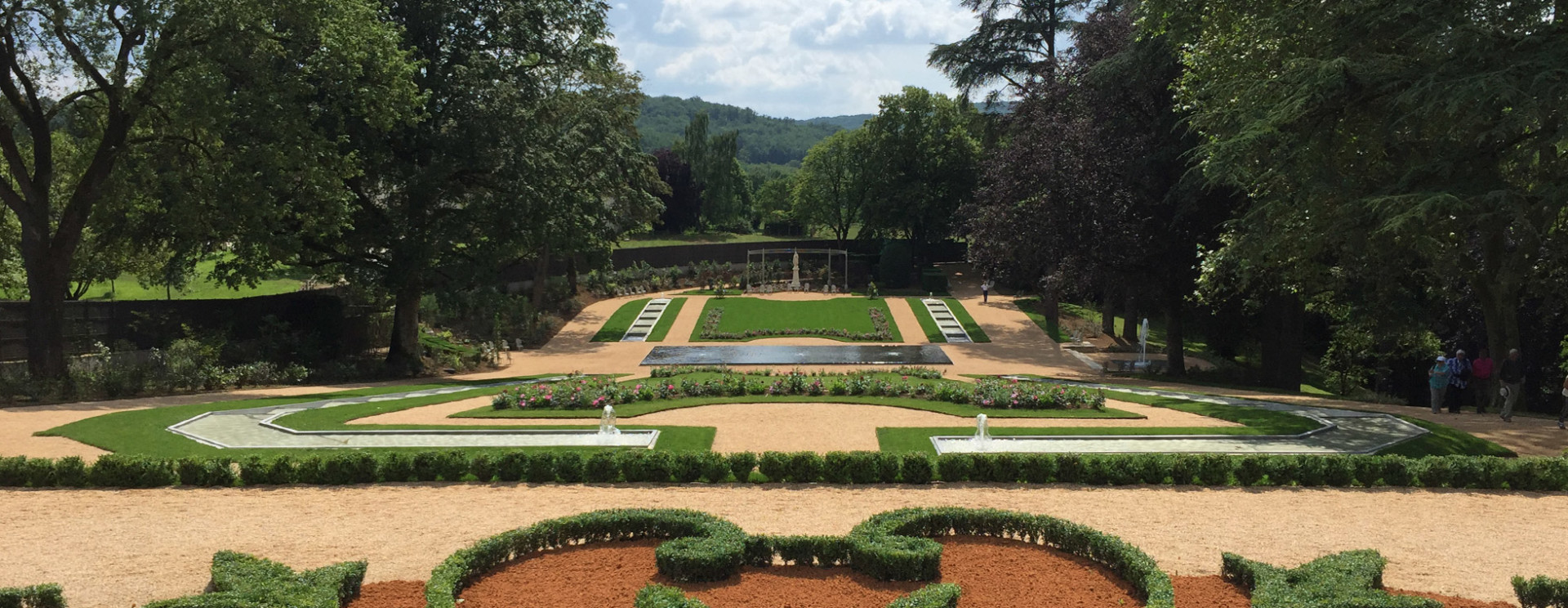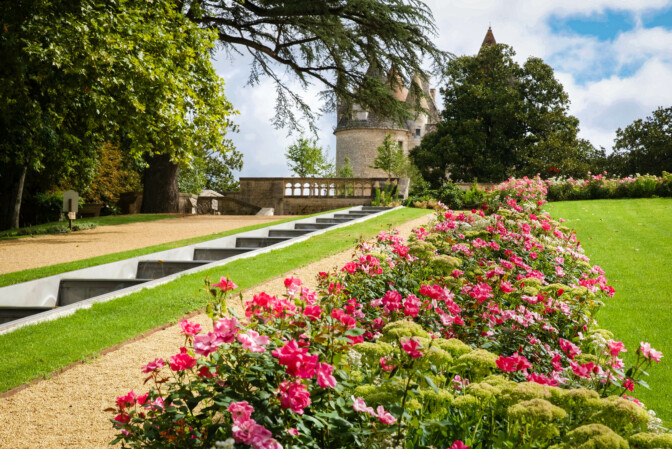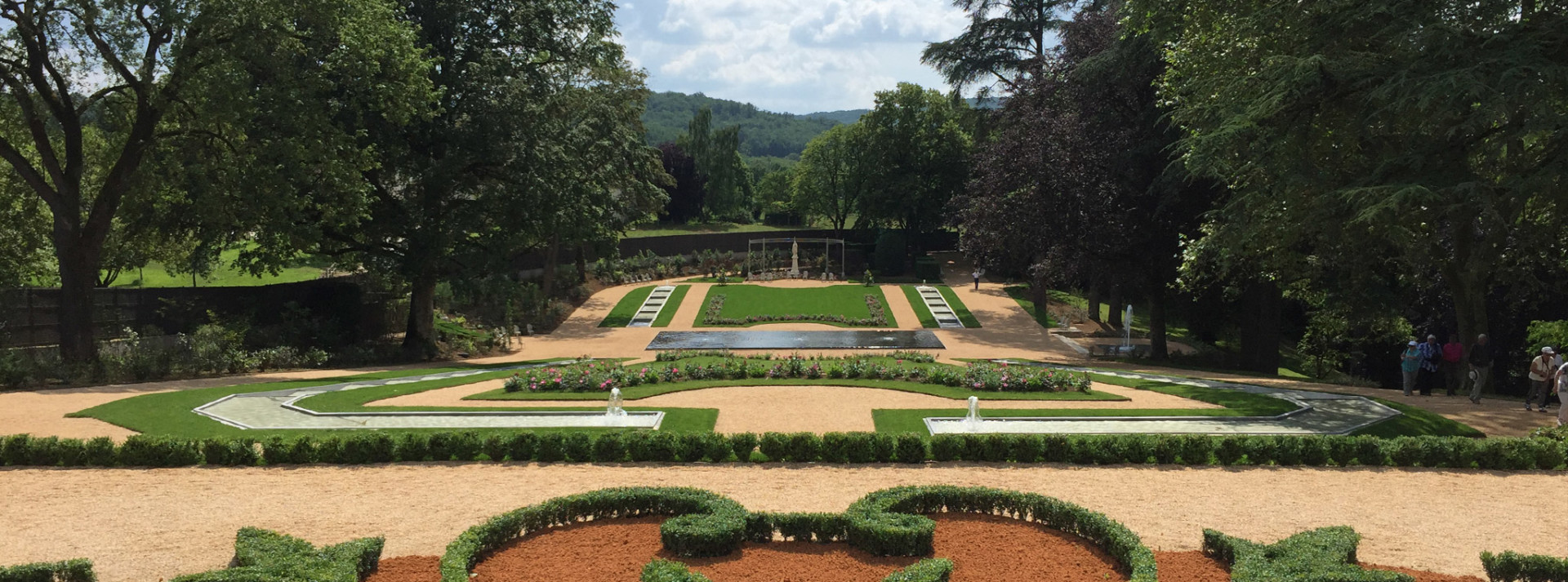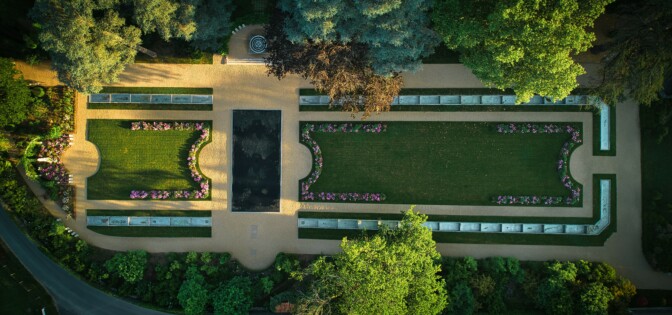
The Garden and Park
The legacy of Jules Vacherot
A French garden and a landscaped park: here is a great opportunity to stroll through a garden listed as a Historic Monument and labeled Remarkable Garden!
Click HERE to see the plan !
The legacy of Jules Vacherot
When Jules Vacherot designed the garden (between 1900 and 1908) on behalf of Charles Auguste Claverie, the new owner, he was influenced by the style of the French garden for the western part. His work is complicated because the terrain is very uneven.
Jules Vacherot lived from 1862 to 1925. He was head gardener for the city of Paris during the Universal Exhibition of 1900 and supervised the construction of the exhibition center. He was entrusted with the design and construction of the gardens of the French pavilions of the International Exhibitions abroad: that of Saint Louis in the United States in 1904, that of London in 1908, Brussels in 1910 and many others.
In 1908, during the design of the castle gardens, there was a period of reflection on the art of gardens and a period of changes in spaces with the creation of the profession of landscape architect. Jules Vacherot is part of this current which questions both the major earlier stages in the history of gardens and the practices implemented by the dominant Landscape School of Barillet-Deschamps, initiated by the major works of Haussmann and Alphand, in Paris under the Second Empire.
The most successful Art is embodied in the composite garden, whose style mixes two genres: the irregular and the regular. The Milandes park is therefore made up of two subsets: a regular park carried by a large perspective developed to the west, juxtaposed with an irregular park, or landscaped park.
The Milandes park is a magnificent achievement corresponding to the expression, which has come down to us, of this renewal of the art of gardens at the end of the 19th century.
Since 2003, a succession of works have been carried out giving the garden a new dimension.


The Renaissance
The garden was restored in 2016 under the direction of Madame Françoise Phiquepal, landscape architect and specialist in historic gardens.
Josephine Baker had the opportunity to maintain the park thanks to 10 gardeners. Unfortunately, financial problems forced her to abandon her garden in the early 1960s. Thus, over time, almost all of the shrub beds had disappeared: Madame Phiquepal’s plan introduces the planting of many plants, trees, shrubs, thus recreating the vanished groves.
The restoration work on the regular garden was carried out in record time: after 6 months of work, 1,500 meters of trenches, 1,400 tonnes of topsoil brought back, the planting of more than 10,000 plants, 1,600 m² of unrolled lawn , 4 km of buried pipes and the installation of extraordinary hydraulic machinery, the visionary spirit of Vacherot is resurrected… The result combines with great charm respect for the original design and mastery of striking modernity.
In 2017, work on the garden continued with the development in the northern part of the property of the topiary garden, the alley of hydrangeas (Madame Emile Mouillère) and the green staircase in order to lead the visitor into a maze of paths with generous curves.
The castle park has been listed as a historic monument since 2009 and the restoration work allowed the garden to be labeled “Remarkable Garden” in the spring of 2018: a great recognition!

